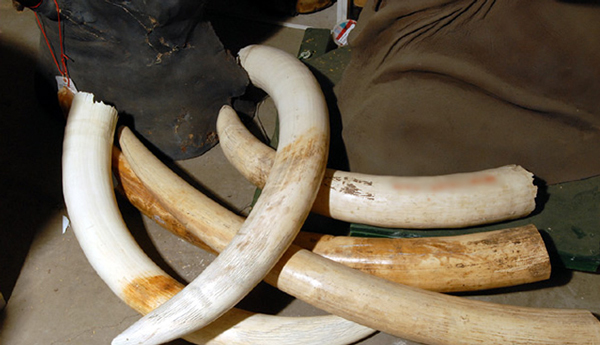
Poaching still rife – 13 tusks recovered

The Ministry of Environment and Tourism and the Namibian Police earlier this week confiscated 13 elephant tusks and apprehended three suspects at Tjova village in Kavango East Region.
According to the Ministry’s Chief Public Relations Officer, Romeo Muyunda, the other 2 suspects fled to Angola and preliminary investigations indicate that of the three suspects that were arrested 1 is Namibian and 2 are Angolan nationals.
The joint patrol was a response to a tip off from members of the public who alerted the authorities. The suspects are due to appear in court on counts of charges that include possession of special controlled wildlife products.
“The Ministry takes cases of Illegal position of prohibited wildlife products very seriously and we will continue to increase our efforts in combating poaching and other related activities. This should serve as a warning to poachers that our officials and other relevant authorities are on the ground to eliminate the threat of poaching and other wildlife related activities,” he said.
“We further appreciate the efforts from the members of the public who continue to assist us in our cause to stop poaching. The ministry and its stakeholders will continue with its awareness campaign to prevent and completely these illegal activity,” Muyunda added.
Namibia currently has a large stockpile of ivory from poachers which has been building up over the years, despite numerous efforts in the country to curb the illegal trading of the precious horns.
Meanwhile, Muyunda said the Ministry has also noted concerns from the public regarding the rhino carcase suspected to have been poached at Otjiwa Private Game Range in Otjiwarongo District on 23 January.
According to him, the Ministry has conducted investigation in the case and preliminary findings indicate that there is no evidence that points out that that specific rhino was poached.
“Our officials together with the members of the protected resource unit of the Namibian police force scanned the carcase for ballistic evidence and no signs of foul play could be detected.
The carcass has a wound that could be as a result of fighting with another Rhino. The horns of the rhino were intact at the time it was discovered and further investigations continue,” he said










































